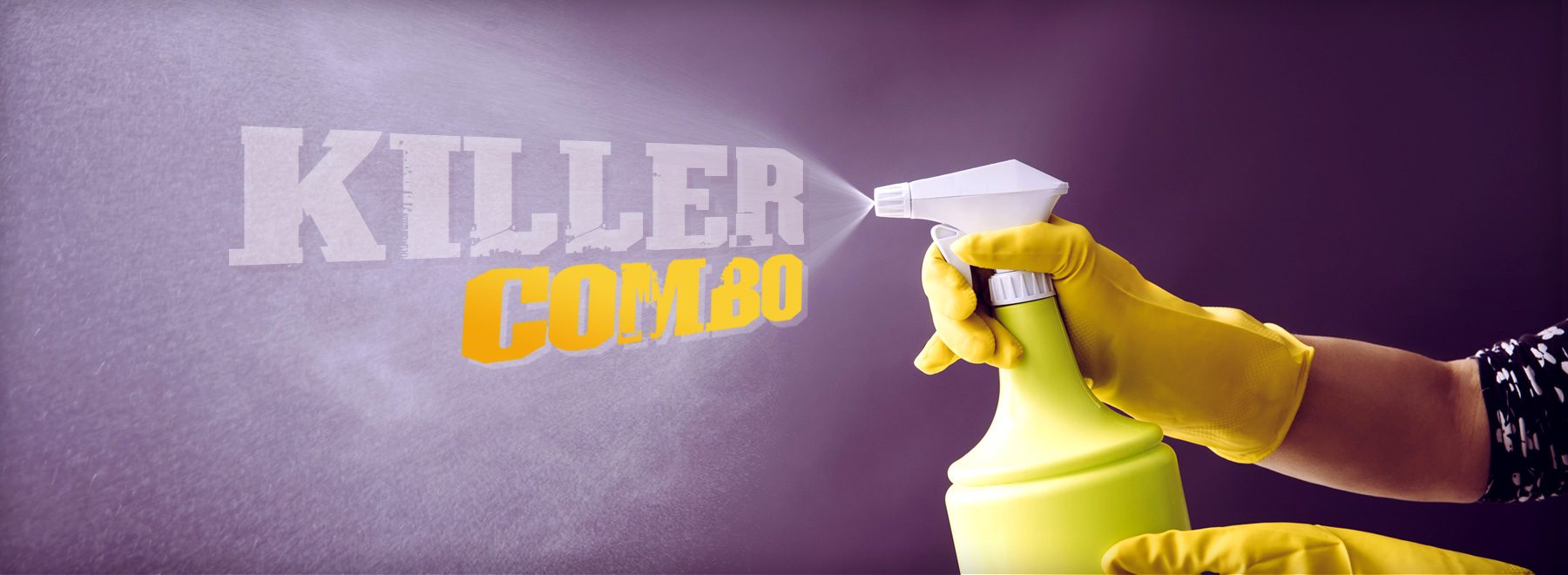Poison control experts: Mixing household cleaners could have perilous outcomes
Open the cabinets under the kitchen sink in the average person’s home, and you’ll spy a plethora of cleaning products.
Pouring the tail end of one product into the container of another, however, or combining cleaners to make a concoction of your own can be disastrous, University of Mississippi Medical Center experts warn.

“You should never mix household cleaning products,” said Dr. Brett Marlin, UMMC assistant professor of emergency medicine and assistant director of the Mississippi Poison Control Center. “Just don’t mix things you keep under the sink.
“If you mix an acid and a base, it will release a gas. If you mix bleach with an acid, or a sulfur-containing product with an acid, it can release chlorine gas or hydrogen sulfide. These are strong irritants. Hydrogen sulfide can be rapidly lethal.”
Poison exposures reported to the Poison Control Center, housed at UMMC, have boomed during the COVID-19 pandemic as Mississippians strive to clean surfaces possibly contaminated by the highly contagious virus.

Between March 1 and July 28, nurses at the Poison Control Center answered 394 calls concerning people who had ingested, inhaled, been burned by or received an eye injury from bleach, disinfectant or hand sanitizer. Of those, about 68 calls were received from people reporting inhalation of gases produced by mixing bleach with another household product, said Kristin Wright, a pharmacist and the center’s managing director.
Compared to the same period in 2019, the center has seen a 29 percent increase in bleach calls, 56 percent in disinfectant calls and 49 percent in hand sanitizer calls, she said.
“May was our busiest month for these calls, but our nurses continue to get exposure calls daily for these products,” Wright said. “A lot of times, people will take cleaning products and put them in different containers – Gatorade or soft drink bottles, or a bottle that would normally contain a drink.
“Someone comes behind them and takes a swig. The majority of those patients can be handled at home, but if someone is showing symptoms, we advise them to go to the ED, depending on the scenario or their comorbidities.”
The center took a call in July from a young woman who accidentally ingested bleach when she took a sip from an unlabeled glass that someone had filled with the cleaner.
“Patient immediately spit it out,” her report said. She was advised to rinse her mouth, brush her teeth and drink cool water, juice or milk.

One ill-advised combination of cleaners is bleach and ammonia, said Dr. David Vearrier, UMMC professor of emergency medicine and a toxicologist who works with the Poison Control Center.
“When you mix them, you can produce a mildly irritating gas, but if you inhale it long enough, you can get a lung injury,” Vearrier said. “Any time you mix cleaning products, it has the potential to liberate gases.”
The center logged a call in April from a man whose middle-aged wife unintentionally inhaled a toxic chloramine gas.
“Patient mopped the floor with bleach and ammonia last night,” the report stated. “Patient has had a persistent cough ever since. Based on the information provided, this is a potentially toxic exposure.”
The patient was advised to visit her primary care provider if throat irritation and cough persisted, but to go to an Emergency Department if she became short of breath or developed chest pain. In both cases, the center was prepared to call ahead to the clinic or the ED and explain the patient’s situation.
Marlin advises using household cleaners, especially bleach, in a well-ventilated area to minimize harm from toxic gases. Care also should be taken not to get cleaners on your hands or in your eyes. Some disinfectants and cleaning products can burn your skin, even if the burn isn’t immediately felt or seen.
“Everyone has bleach underneath the sink,” Marlin said. “Don’t handle products like that without protection on your hands. Basic compounds can do damage to your skin, and sometimes it’s delayed.
“Hours later, your hands can be pretty raw.”
A number of callers have reported they’ve eaten food from a counter that had just been sprayed with a disinfectant or from the palms of their hands still damp from hand sanitizer.
“They ask about the risk associated with it,” Wright said.
Just as you should never ingest or inhale cleaning products, you also should never drink or ingest hand sanitizer. The Poison Control Center recently took a call concerning a teenager who swallowed hand sanitizer on a dare. What made it especially dangerous was that the particular brand swallowed contained methanol, or wood alcohol, instead of ethyl alcohol traditionally used in hand sanitizers.
Ingestion of methanol can lead to blindness, hospitalizations and death. Symptoms of methanol exposure also include nausea, vomiting, headache, blurred vision, seizures, coma and permanent damage to the nervous system. Young children who drink wood alcohol accidentally or adolescents and adults who drink it as a substitute for alcoholic drinks are especially at risk.
In late July, the U.S. Food and Drug Administration warned consumers about a Mexican-based company that had been selling hand sanitizing products containing methanol. The FDA said many new companies that have sprung up since the pandemic began are selling hand sanitizer laced with methanol obtained overseas or in Mexico.
The FDA has cited more than 75 different hand sanitizer products that should be avoided because they contain methanol. Some of those hand sanitizers are marketed as having FDA approval, but the FDA doesn’t approve or endorse hand sanitizers, the agency said. Hand sanitizers containing methanol also can be toxic when absorbed through the skin during hand cleansing.
The Poison Control Center has received a number of calls from people who reported ingesting a hand sanitizer marketed as Blumen, a recalled brand containing methanol, Wright said.
“We have some people who are abusing it – drinking it to get drunk,” she said.
One July caller, a middle-aged woman, was suffering from nausea and a headache and had been using a toxic amount of Blumen on her hands for weeks, not knowing it contained methanol. She took the center’s advice to go to the ED to receive fluids, magnesium and potassium.
“My biggest concern is that in the age of Amazon, your product quality has dropped down,” Marlin said. “You can order things that don’t meet the safety requirements of the FDA.
“Hand sanitizers bought online can contain high amounts of methanol, or the amount can differ between batches. You don’t know what’s in it, and there’s no guarantee that methanol won’t be in it.”
Methanol is much more dangerous than ethyl alcohol, or ethanol.
“Only drink ethanol that is marketed as an alcoholic beverage,” Marlin said. “Even when methanol exposures are not lethal, they can lead to permanent blindness or brain damage.”
Anyone ingesting or absorbing methanol should seek immediate medical attention in hopes of reversing the effects by administrating treatment that can include bicarbonates, diluted ethanol, additional hydration and assistance with breathing.
How cleaning products are stored “is key,” Wright said.
“Keep them out of the reach of children, and keep them in their original bottles,” she said. “Keep them well labeled, and use one product at a time so that you’re not mixing them.”
The Mississippi Poison Control Center is available 24 hours a day, each day of the year, to assist callers and the health care community in assessing and managing cases of poisoning. It’s staffed by nurses specially trained in poison information care. For poison exposure or general information, call (800)-222-1222.
The above article appears in CONSULT, UMMC’s monthly e-newsletter sharing news about cutting-edge clinical and health science education advances and innovative biomedical research at the Medical Center and giving you tips and suggestions on how you and the people you love can live a healthier life. Click here and enter your email address to receive CONSULT free of charge. You may cancel at any time.



